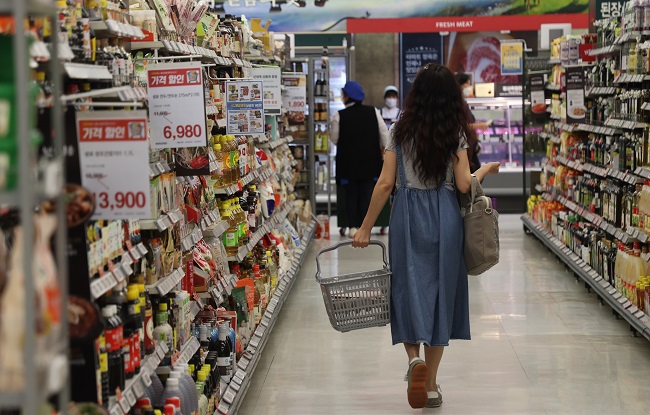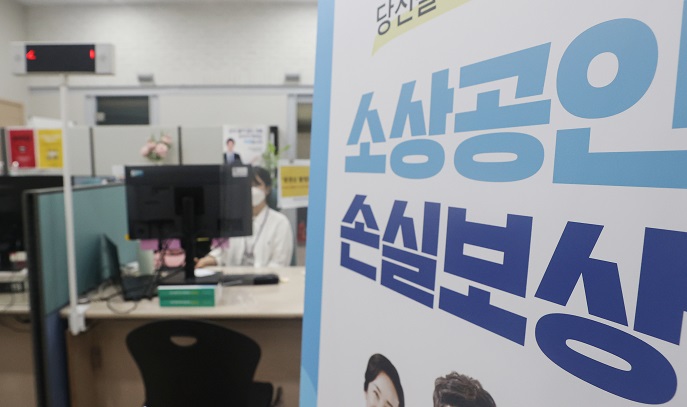
This file photo, taken June 27, 2022, shows people shopping for groceries at a discount store chain in Seoul amid high inflation. (Yonhap)
SEJONG, Nov. 17 (Korea Bizwire) — Household income rose 3 percent on-year in the third quarter from a year earlier as the country gradually returned to pre-pandemic normalcy, data showed Thursday.
An average household earned 4.86 million won (US$3,644) per month in the July-September period, compared with 4.72 million won tallied a year earlier, according to the data from Statistics Korea.
The finance ministry attributed the growth to the country’s sound job market and the normalization of face-to-face businesses.
In the third quarter, profits earned through wages increased 5.4 percent on-year to an average of 3.11 million won per month. The monthly average income from business operations rose 12 percent to 991,000 won.
On the other hand, transfer income backed by state support slid 18.8 percent over the period to 652,000 won as the government scaled down pandemic-related compensation and subsidies.
Monthly household spending on consumption goods moved up 6.2 percent to reach 2.7 million won as people spent more on restaurants, entertainment, transportation, education and clothes.
However, when adjusted for inflation, the growth came to just 0.3 percent.
South Koreans’ spending on food and alcoholic beverages fell on-year amid the high inflation.
Non-consumption spending, including insurance, moved up 6.6 percent to 1.01 million won, the data also showed.

This file photo, taken June 30, 2022, shows a banner set up at an agency designed to support small merchants in Seoul that says pandemic-hit merchants can apply for state compensation for their losses caused by the government’s virus restrictions. (Yonhap)
Households’ average propensity to consume, measured by the percentage of consumption expenditures out of disposable income, advanced 2.8 percentage points on-year to 70.2 percent in the third quarter, the data also showed.
In the third quarter, the income gap between the haves and have-nots widened.
The average monthly income of the bottom 20 percent income bracket shed 1 percent on-year to 1.13 million won. In contrast, those in the upper 20 percent group made 10.41 million won, up 3.7 percent from a year earlier.
The country’s distribution ratio for disposable income, a key barometer of earnings equality, reached 5.75 in the third quarter, up from 5.34 tallied a year earlier. A higher ratio means increased inequality in income distribution.
It means that the top 20 percent income bracket had 5.75 times more earnings than those in the bottom 20 percent over the cited period.
South Korea plans to continue to bolster its social safety net to protect the vulnerable group and curb inflation to ease their burden, the finance ministry added.
Meanwhile, consumer prices, a key gauge of inflation, rose 5.7 percent last month from a year earlier, picking up speed from a 5.6 percent increase in September, separate data showed earlier this month.
(Yonhap)






